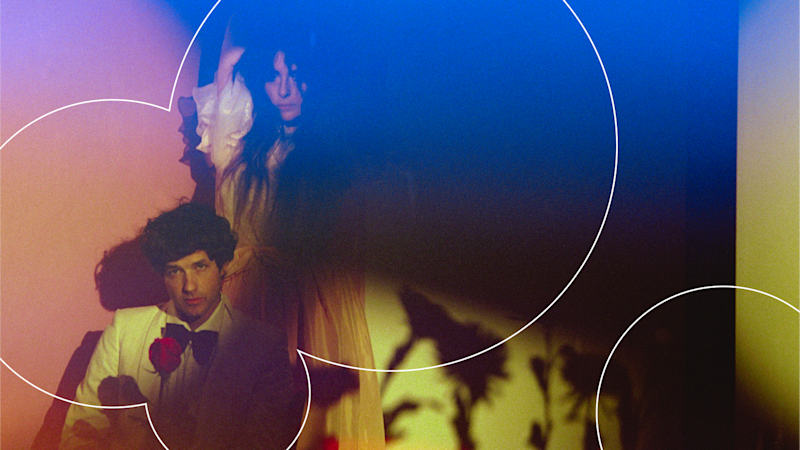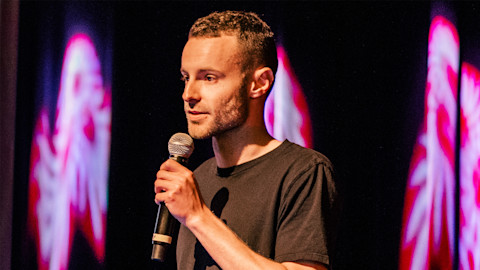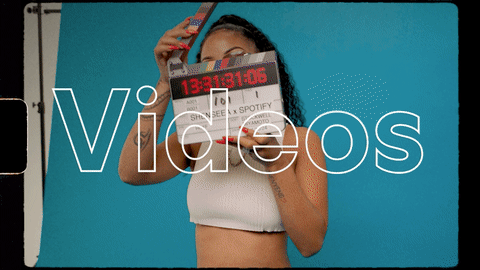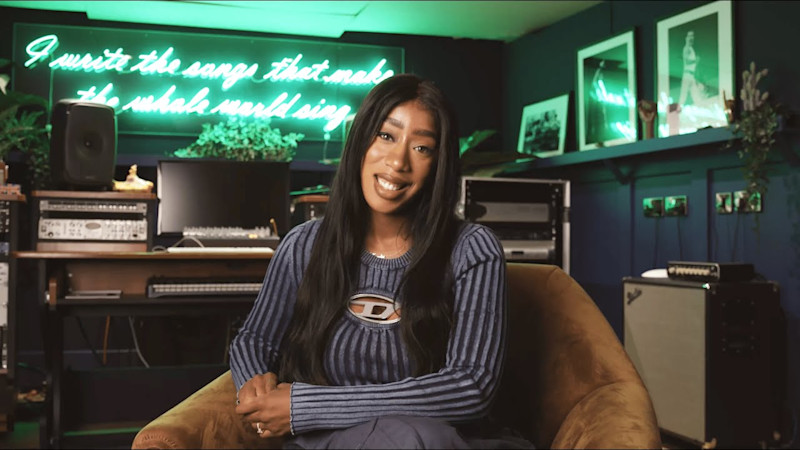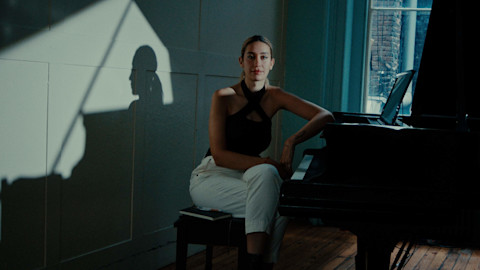As the COVID-19 epidemic halted the touring industry for the foreseeable future, many musicians embraced livestream concerts as a means to stay connected with fans, scratch the itch to perform, and maybe make a little money for themselves or a charitable cause.
But for some artists, livestreaming is simply not a viable option, whether it’s because their music doesn’t naturally translate to such an intimate setting, or because they feel self-conscious singing to nobody and everybody at the same time through their smartphone. So, to keep their fans engaged in the absence of live shows, four artists—Tim Burgess, IDLES, The Dears, and Ellis—got creative. Here, they share their unique solutions to interacting with fans that others can use now or later, whenever live shows safely resume.
Host a listening party
As the frontman for British rave-rock trailblazers The Charlatans, a solo artist, and globe-trotting DJ, Tim Burgess has made a career of bringing disparate audiences together. So, when COVID-19 derailed plans to tour his spring 2020 release, I Love The New Sky, he put his master-of-ceremonies acumen to use by hosting a Twitter listening party for The Charlatans’ 1990 debut album, Some Friendly, inviting followers to play the record at a scheduled time while he live-tweeted stories behind each track. He’d done similar events before, but with fans hankering for at-home entertainment, his party soon got very crowded.
"I knew they made people happy,” Burgess says. “I tweeted, ‘Would anyone be interested in a listening party over the weekend?’ and everyone was up for it. One response came from [Franz Ferdinand's] Alex Kapranos, saying, ‘I bought Some Friendly when I was 17,’ and it occurred to me that he should do one.” He then recruited Blur’s Dave Rowntree, former Oasis bassist Paul “Bonehead” Arthurs, and Prefab Sprout’s Wendy Smith to do their own. “And then it was a thing," he says.
![Tim Burgess, Photo Courtesy of Management]()
Tim Burgess, Photo Courtesy of Management
#TimsTwitterListeningParty became a nightly Twitter ritual, with Burgess corralling everyone from Culture Club and Duran Duran to Sleaford Mods and Ariel Pink to provide commentary on their most popular records. By summer, he’d hosted over 250 sessions, sometimes up to three per night. (And if you missed one, Burgess’ website archives the tweets and lets you replay them, in real time, as you listen along.)
Whether he’s communing with pop stars, underground luminaries, famous followers, or random fans, the beauty of #TimsTwitterListeningParty is that everyone taking part reverts to being that wide-eyed teenage music fan listening with fresh ears.
“The most gratifying part is hearing people say that they hadn’t listened to an album in its entirety for the longest time because they've never had time,” he says. “With the lockdown, we've had all the time in the world, so the parties are kind of bringing the album—and the artistry of an album—to the forefront again.”
Host a talk show
Bristol post-punk band IDLES had both of their albums celebrated on #TimsTwitterListeningParty, but their own audience-engagement efforts during the COVID crisis veered to a tried-and-true format: the talk show. In June, frontman Joe Talbot debuted Balley TV, a YouTube roundtable discussion he describes as “Wayne’s World meets The Word.” Because of social distancing, there’s no studio audience and guests appear via iPads affixed to the heads of mannequins and oversized teddy bears.
“As [COVID-19] came, we went into creative-thinking mode about what we could do to stay connected with our people,” Talbot says. “We wanted to build something new with our fanbase and invite people in—the premise being you can't go to the pub and a lot of people can't see their therapist, so Balley TV is a way to allow people into a small little universe of compassion and interest.”
![Joe Talbot, Photo by Lindsay Melbourne]()
Joe Talbot, Photo by Lindsay Melbourne
Balley TV is a lot like an IDLES song in televisual form—a bastion of progressive politics, gritty DIY aesthetics, and joyous anarchy. Filmed in a practice space, it feels like a casual hang in Talbot’s living room, albeit with houseguests that include Mike Skinner (aka The Streets), CHVRCHES singer Lauren Mayberry, and Pussy Riot’s Nadya Tolokonnikova, along with the band’s non-musician friends. The conversations delve headfirst into subjects like the #BlackLivesMatter protests and white privilege, but also float freely into cheery discussions about ’90s pop and marshmallow-eating challenges. As a bonus, viewers get a preview of a track from IDLES’ upcoming third album, Ultra Mono, at the conclusion of each episode.
“It’s the same as how I write music, really,” Talbot says of hosting. “We’ve got people on who are famous, but not for that reason alone. It's important to try and nullify the idea of hierarchy—that's why I’ve got a friend on every episode, to create the idea that everyone’s opinion counts. That makes the audience feel like they’re part of that conversation.”
Host press conferences
Like IDLES, Montreal art-rock veterans The Dears weren’t about to recreate their notoriously intense concerts in a livestream format. “How do you translate that to Instagram Live?” asks frontman Murray Lightburn. “It’s like watching porn versus actually having sex.”
Unlike IDLES, Lightburn and his wife/musical partner Natalia Yanchak don’t have a celebrity Rolodex to call upon for their shows, so they turned over airtime to their fans. In the week leading up to May’s release of their eighth album, Lovers Rock, they hosted daily Instagram sessions where they discussed all their albums while fielding questions from viewers.
![The Dears on Instagram Live]()
The Dears on Instagram Live
“It was a super-fun, low-stakes, low-investment experience,” Lightburn says. “It was like doing a live podcast.” The Q&As might have been a product of circumstance, but Lightburn sees long-term value in them. “We always make a point of thanking our fans for supporting us, so we try to do things that make them feel closer to the work in a way that they’ll continue to invest in it.”
Become a teacher
For Hamilton, Ontario-based dream-pop artist Linnea Siggelkow—aka Ellis—the COVID shutdown was particularly dispiriting. In March, she was gearing up to make her SXSW debut and embark on a month-long US tour in the run-up to the April release of her first LP, Born Again. Forced to scrap those plans, she went the livestreaming route, adapting her heavily textured songs to solo-guitar performances. The experience gave her “a lot of anxiety,” though, and she sensed a certain livestream overload among fans.
“It was kind of fun at first, but maybe people are feeling exhausted by it now,” she says. “It's definitely oversaturated and overwhelming for listeners to even know what to tune into.”
![Ellis, Photo by Ebru Yildiz]()
Ellis, Photo by Ebru Yildiz
She’s continued to post videos on Instagram, but she’s not performing her songs—she’s teaching people how to play them. After receiving fan requests for chord charts, Siggelkow—who gives guitar lessons to kids as a side gig—introduced her “Tutorial Tuesdays” series, where she instructs viewers how to play Born Again tracks, fulfilling her need to perform and interact with fans.
“It feels more intimate and engaging to be teaching a song rather than just performing it,” she says. “I can do these at my own pace and put them out when it feels right. And it's a perfect time to learn how to play. If you have a guitar at home and you don't know how to play it, you could—my songs are pretty easy.”
—Stuart Berman
